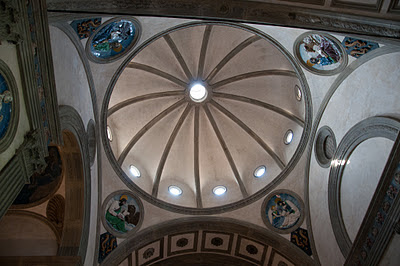My mum is a born super sleuth and shopper, one of her many fortes is finding very cool shops wherever she is around the world. Cutting edge or artisanal, she’ll suss it out! Every time she comes to Florence she discovers a new gem. A few years ago she discovered my now favourite little ceramic shop.
| Deruta ceramics from La Botteghina del Ceramista |
 |
| Deruta ceramics from La Botteghina del Ceramista |
 |
| Montelupo ceramics from La Botteghina del Ceramista |
 |
| Antique maiolica pot from Montelupo |
A tin-glaze was applied to the earthenware base which created a white glossy opaque base on which designs and images could be applied. The tin glaze is a clear lead glaze to which tin oxide is added in a ratio of apporximately 1:3. First used in the Middle East, the technique was brought to Europe by the Moors in the Spanish area. With the influx of the Hispanic Moorish produced ceramics to Italy, both these original imports and the copied local work in technique and decoration, was dubbed Maiolica after the island Maiorca.
An over glaze was sometimes added which resulted in a brilliant shine and iridescence produced by the metallic oxides. The object was given a second firing at a low temperature in a ‘muffle kiln’ (reduction kiln) which excludes oxygen.
Luca della Robbia, a sculptor and contemporary to Donatello in the first half of the fifteenth century, transformed the tin-glaze terracotta technique into a viable alternative to marble sculpture. He created a large and efficient family workshop in Florence and worked not only for the most important families of Florence, the Repubblic, but his fame spread far and wide to the countryside and other cities in central Italy. One can admire the della Robbia works all over Florence; on the exterior of the Orsanmichele church, in the atrium inside the Pazzi chapel in Santa Croce, inside the Santa Trinita church, the Santi Apostoli church and the cathedral, the Foundling hospital and numerous examples in the Bargello National sculpture museum. His workshop was continued by his nephew Andrea, after his death, and Giovanni, Andrea’s son, after him. So diffused was their work, that their surname has become synonymous with tin-glazed ceramics.
 |
| Ceiling of the chapel of the the Portuguese cardinal in San miniato al Monte church showing the four cardinal virtues with the holy spirit in the middle by Luca della Robbia |
 |
| Ceiling of the Pazzi Chapel in the Santa Croce church (courtesy of Becky Reid). |
 |
| Resurrection of Christ by Luca della Robbia – the lunette above one of the two sacristies in the cathedral. |
 |
| Madonna and Child by Luca della Robbia, Orsanmichele |
Some common terms explained:
Terracotta (trans: baked earth) is unglazed ceramic. It can also be used to describe glazed ceramic when the body is porous and red. It is often used for figurines or objects that have not been made on a potter’s wheel, which is then often referred to as pottery. The word ceramic comes from the Greek, meaning ‘of pottery’, and is usually referred to as terracotta having been fired and glazed.
The term maiolica was in use from the medieval period for earthenware with designs that resembled the imported Spanish ceramic from the area of Maiorca. It then became the name used only for lustreware, referring to both Spanish imports or local products. Lustreware is ceramic with a metallic glaze that gives an effect of iridescence produced by metal oxides in an over glaze finish produced by a second firing at a lower temperature in a reduction kiln which excludes oxygen. Tin-glaze ware was called bianchi (or white-ware) resulting from the first firing. Later, the term maiolica was used for any tin glazed earthenware, lustred or not.
Faience is the English word often used to describe tin-glaze terracotta. It originates from the name of the town Faenza (in the Italian region of Emilia-Romagna) known also for their ceramics.
Ceramic shops in Florence that I like:
La bottegista del via Guelfa – http://www.labotteghinadelceramista.it/, via Guelfa 5/r
Sbigoli – http://www.sbigoliterrecotte.it/, via Sant’Egidio, 4/r




